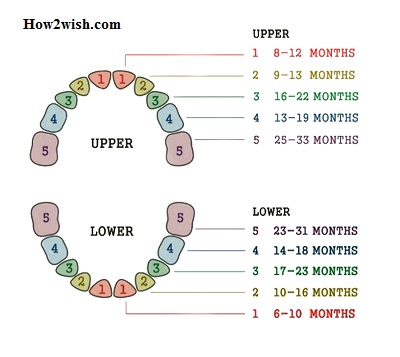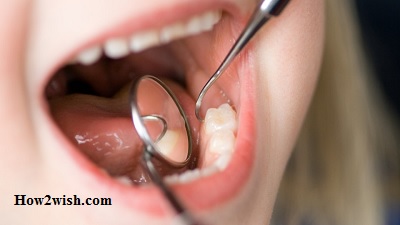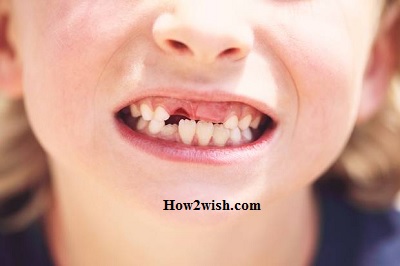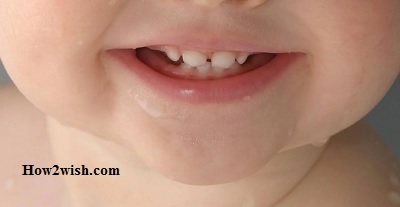The order of eruption of milk teeth, and molars in children should be known to all young parents. Small deviations from the standards in terms of the timing and order of release of units are acceptable since each baby develops at an individual pace. It is worthwhile to carefully monitor the baby during this crucial period and contact the pediatrician if suspicious symptoms appear.

If the baby feels severe discomfort and shows constant anxiety, you need to alleviate the unpleasant symptoms. There are many effective pharmaceutical and non-drug remedies that are safe in infancy.
Teething rules
- Units appear in pairs.
- Most often, the lower central incisors are cut first, and then the upper ones. The same goes for molars and canines.
- The approximate number of dental elements in a particular age category is calculated using the formula “age in months minus 4”. It turns out that, on average, in 2 years, 10 pieces are formed on both jaws.
Symptoms
Milk teeth in a child erupt both asymptomatically and with pronounced symptoms. The baby may experience some discomfort:
- Increased salivation;
- Loss of appetite, rejection of mother’s breast or formula bottle;
- Systematic holding of objects in the mouth attempts to gnaw them because of itchy gums;
- Redness and swelling of the mucous membranes in the mouth;
- Sleep problems;
- Capricious behavior during periods of wakefulness, and constant anxiety.
Other symptoms are also possible:
- Increase in body temperature to sub-febrile values;
- Wet cough, runny nose associated with excess saliva;
- Liquid stool;
- Rashes, irritations on the chin, and chest.
Which teeth appear first
At the very beginning, the central incisors erupt. In most cases, they appear on the lower jaw and only then on the upper. Most often this occurs in pairs at the age of 6-8 months. Crowns are narrow.
Eruption sequence
Dental units can also come out in the wrong order since each baby is an individual. But moms and dads should still focus on the existing order:
- First, the so-called “ones” are shown;
- Then “deuces”;
- After the first molars appear (“fours”);
- Fangs erupt (“triples”);
- The last to come out is the “fives”.
Do not panic if the baby does not go through this process as shown above. There are many factors that can affect the order in which crowns come out.
Possible reasons for the delay
The order and timing of the eruption of milk teeth in a child may deviate somewhat from the established norms. However, if the baby is one year old, and crowns have not yet appeared on the surface of the gums, it is necessary to consult a dentist. Why might this be a problem:
- Heredity. When the first incisors came out late in mom, dad, or both parents, this feature is most likely inherited by children.
- Calcium deficiency. Usually, with rickets, there is a lack of a vital element, it is not absorbed due to malfunctions in the functioning of the gastrointestinal tract and metabolic disorders.
- Hormonal imbalance. In particular, this applies to insufficient production of thyroid hormones.
Infectious pathologies in infancy. Past diseases have a negative impact on the functioning of the body. - Adentia. This is the complete or partial absence of tooth germs. This feature is diagnosed only with the help of x-rays.
- Prematurity. Babies born prematurely often lag behind their peers in physiological development by 1-2 months.
The order of teething of milk teeth in children – table
Age in months What appears
- 6-9 central upper and lower incisors
- 8-13 doubles above and below
- 12-15 first molars
- 18-20 fangs
- 19-30 second molars
All terms are conditional. This means that if there are minor deviations in the first year of life, you should not panic and invent non-existent diseases. It is better to show the baby to a pediatric dentist. An experienced doctor will be able to discern a possible pathology and, if necessary, refer you for an X-ray examination.
The reaction of the body to the first teeth
At this time, the child often cries, gets upset for no reason, and refuses to eat, because he experiences severe discomfort. Parents need to be patient and support the baby during this difficult time.
Increased salivation
The salivary glands begin to function more actively. The gums prepare for the appearance of incisors, canines, and molars, and additional moisture helps to prevent the penetration of infectious agents. This symptom disappears at about 8-10 months when the baby is already strong enough.
Also, when crowns break through, immunity decreases. And you need to be prepared for the fact that the baby, pulling his hands and surrounding objects into his mouth, will not be protected from pathogenic microorganisms.
Runny nose
How do milk teeth erupt in a child (the order of eruption in infants does not matter), if immunity falls? Since the children’s bodies cannot fully resist viruses and bacteria, nasal congestion appears. Snot is also observed due to profuse salivation. The secret enters the middle ear and flows down the nasal passages.
Coughing
This feature is directly related to the one discussed above. The baby cannot swallow a large amount of liquid in time and is forced to cough, or sneeze. With the accumulation of saliva in the nasopharynx, quiet wheezing is heard in the chest.
In the absence of an infectious process, cough is observed exclusively at night. This is due to the horizontal position of the baby and the impossibility of draining liquid contents into the throat. A cough reflex occurs about every half an hour.
You can also get The Guide to Strengthening Tooth Enamel and Maintaining Good Oral Health
If along with such a symptom, the body temperature rises, and distinct wheezing is heard, you need to consult a doctor and undergo all the necessary diagnostic tests.
Diarrhea or constipation
Even if the order of teething in infants (children under one year old) is not disturbed, the gastrointestinal tract reacts sharply to any changes. An abundance of saliva, sleep problems, and stress can provoke diarrhea. The opposite condition, when the child does not walk in a big way, is much less common.
Parents should carefully monitor the manifestations. Indigestion may indicate poisoning or other pathological processes. Normally, the consistency of feces changes slightly, the symptom persists for no more than three days.
Vomiting, nausea
Seen infrequently. Provoked by excessive salivation and cough syndrome. If the baby often vomits, then this is not normal. Perhaps he was poisoned, so it is recommended to urgently call a local pediatrician or an ambulance.
Gum swelling
This can be checked by slightly pressing on the mucous membranes. Small tubercles on the gingival surface are visually determined and are easily palpable.
Sometimes blood clots are observed on the elevation. This is due to the natural rupture of the vessel due to the penetrating crown.

The swelling of the membranes causes itching and pain. When infected, abscesses appear, the same thing happens with accidental injury with toys or sharp objects that have fallen into the oral cavity.
Decreased appetite
Despite the order of eruption and age, children’s teeth almost always cause discomfort. Babies are often naughty while eating or completely refuse food. The formation of the chewing apparatus takes energy, and they are not left for chewing. When all the rows are cut through, the baby will begin to make up for the lack of nutrients. You can’t force him to eat.
Elevated temperature
The fever persists for up to 3 days. Temperatures can reach 38 degrees or more. Doctors associate this symptom with inflammation of the gums and the ingress of infectious agents into wounds on the mucosa. When the dental unit comes out, everything returns to normal.
The thermometer rarely shows values\u200b\u200bof 39-40 °. This is typical for weakened babies who regularly catch colds.
If an infant has a severe fever for 4 days or more, it is important to see a doctor. Most likely, such symptoms have nothing to do with the appearance of incisors, canines, and molars.
Rash on the skin
Rashes occur due to irritation of the skin on the face, neck, hands, in chest area. Saliva gets on soft tissues and corrodes them. The fingers are covered with pimples because the baby constantly pulls them into the mouth in order to scratch the inflamed mucous membranes.
Irritability, moodiness
Of course, the child hurts, and the gums swell and itch. All this is felt quite acutely and affects mood, and sleep. The condition improves immediately after the crown comes to the surface. The baby will want to eat again, will smile, and sleep soundly.
Desire to bite
Even at a fairly conscious age (after a year), children during the formation of a milk bite try to put something into the oral cavity in order to scratch everything inside. What can we say about breasts? When the baby gnaws on something hard, the unpleasant symptoms disappear for a while, and a temporary improvement in well-being is indeed observed.
To do this, children use everything that comes to hand. Adults are required to keep an eye on them at such moments. Otherwise, the baby may get hurt and infect the wound.
In what order do permanent teeth erupt in children: table of the eruption of indigenous units
Age, years What appears
- 6 first molars
- 7 central “ones”
- 8-9 lateral incisors
- 10 first premolars
- eleven fangs
- 12-13 premolars – “five”
- 14 second molars
- 18-25 “eight”
Related issues
Most often, parents are faced with violations of the timing and sequence of the release of dental units. In addition, immunity decreases during this period, and the development of such diseases as SARS, stomatitis, caries, otitis media, pneumonia, etc. is possible.
Pain
Pain most often accompanies babies during the formation of a temporary bite. Fortunately, medicine has a huge arsenal of drugs that are not dangerous for babies, but at the same time quite effective.
Use of medicines
Regardless of the order of eruption of milk teeth in children, the symptoms (itching, pain, and fever) must be tried to alleviate. In pharmacies, there are many drugs with analgesic and anti-inflammatory effects that relieve swelling and burning of the mucous membranes. These are drops, sprays, as well as gels and ointments for external use:
- Calgel;
- Kamistad;
- Holisal;
- Dentinox;solcoseryl.

With an increase in body temperature, antipyretic suspensions, suppositories, and tablets are shown:
- Efferalgan;
- Panadol;
- Ibuprofen;
- Ibuklin;
- Nurofen;
- Paracetamol (children).
The smallest, as a rule, are prescribed rectal suppositories or syrups. The dosage should be calculated only by a doctor.
Folk remedies
Home recipes also help to alleviate the patient’s condition:
- Massaging the gums with a finger wrapped in a piece of gauze. The fabric is pre-wetted in a decoction of chamomile or clean water.
- The impact of cold. The nipple, teether, or spoon is placed in the refrigerator for a while, then they should be given to the child to gnaw.
- You can give the baby herbal decoctions and infusions several times a day, 80-120 ml, depending on age.
- To relieve inflammation, the gums are lightly rubbed with honey.
Gaps between teeth
Up to 3 years of age, dental units in children can be located asymmetrically. Too wide interdental spaces are also often observed. This is normal if the rows are not yet fully formed. At the end of this process, thanks to chewing, everything will eventually fall into place. When the bite begins to change to a permanent one, the gaps will also increase, because the molars, canines, and molars are wider than the milk ones.
When to See a Dentist
The doctor should definitely examine the baby in the following cases:
- Teeth come out too late or do not erupt at all;
- The eruption occurred much earlier than the standard period;
- One of the units that should have been released a long time ago is missing;
- Incisors, canines, and molars appear in the wrong order;
- A black edging is visible on the cervical part of the tooth;
- Very large interdental spaces in front with a formed permanent bite;
- Enamel has a strange shade (yellowish, brown, reddish, etc.);
- Hard tissues are injured.
How to prevent problems
In order for both dairy and indigenous units to be healthy and strong, the following rules must be observed:
- Show the child to a pediatric dentist for prevention at least once every six months (if you do this less often, carious lesions occur, the process in advanced cases turns into pulpitis, and you have to resort to depopulation, which is very painful for preschoolers);
- Do not try baby food from the baby’s spoon;
- Do not lick the nipple (saliva contains pathogenic microflora, individual for each adult, which can lead to illness in a son or daughter if it enters the mouth);
- Minimize the consumption of drinks containing sugar (one of the main causes of caries in childhood is a lot of sugar-containing foods in the diet);
- Teach your son or daughter to rinse their mouth after each meal or drink clean water with food;
- Take measures to prevent injury;
- Revise the nutrition system: include more fresh vegetables and fruits, cottage cheese, cheese, and dried fruits in the menu (products must be allowed for a specific age category);
- Make sure that the baby brushes the dentition twice a day – in the morning and before going to bed.
The order of teething in children (the scheme of milk, permanent ones is drawn up for most young patients) due to the individual characteristics of each child may deviate from the generally established norms. The child’s body reacts differently to the changes taking place. The main task of parents is to alleviate unpleasant symptoms and psychologically support the baby during this difficult period. As soon as crowns erupt on the surface of the gums, the characteristic signs will completely disappear.
